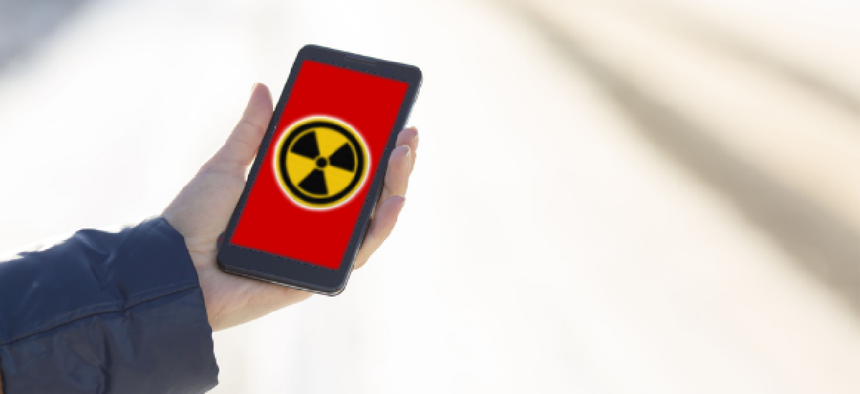Smartphones may be our first line of defense against radiation

Researchers at the Idaho National Laboratory have come up with a new application for smartphones that Mr. Spock would appreciate: detecting gamma radiation.
Even on Star Trek, the communicators were just … well, communicators. In contrast, it seems that every day clever programmers are finding new applications for smartphones. Joshua Cogliati and his colleagues at the Idaho National Laboratory have come up with a new application for smartphones that Mr. Spock would appreciate: detecting gamma radiation.
CellRAD detects gamma-ray photons using the charge-coupled device (CCD) in cellphone cameras.
In fact, the basic idea behind CellRAD is not new, says Cogliati. "We noticed long ago that CCD's carried on NASA spacecraft were impacted by cosmic rays, which leave the same type of trails, so we have sort of known that this would work," he said. "But what's new about it is that now everyone is caring around a camera attached to a CPU in our pockets. So now you can actually take a picture and do the analysis on the cellphone."
Analysis is required because pixels in cellphone CCD's can be excited by many different sources, including other spectra of light, heat and current leakage from the phone itself. As a result, CellRAD can only effectively detect gamma rays when the camera lens is covered, and even then an algorithm developed by the team at INL is required to filter out the noise.
According to Cogliati, the application can detect dose rates in the 100 millirem per hour or higher range. "In a hospital, that kind of range would be achieved next to the X-ray device or if somebody had just received internal radiological treatments," he said.
And since many cellphones contain two cameras, it's possible that the application can even be developed to detect the direction of the radiation source. "We need a little bit more processing power than we have been able to use so far," Cogliati said. "That's a near-term thing that might happen but we haven't accomplished yet."
Cogliati envisions the application, which received development funding from the Department of Defense Rapid Reaction Technology Office, as a powerful tool for first responders and military service members who are already carrying smartphones. "It would be an extra warning device that would be available when they were not going to be carrying higher precision detectors," he said. "And if you aggregate the data from a sufficiently large population you suddenly have information for places that you otherwise wouldn't have it."
Other potential uses might be for passive scanning at ports and borders.
At this point, INL is looking for a private-sector partner to develop the application into a deployable product. It's likely, however, that the team will need to come up with a new name for CellRAD, since there is currently an application for Android called Cell Rad. The latter is software that displays estimates of cellphone radiation exposure for the user.





